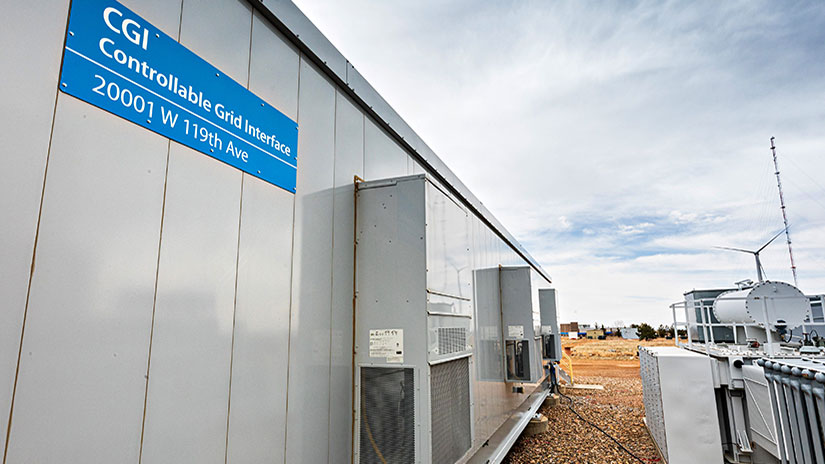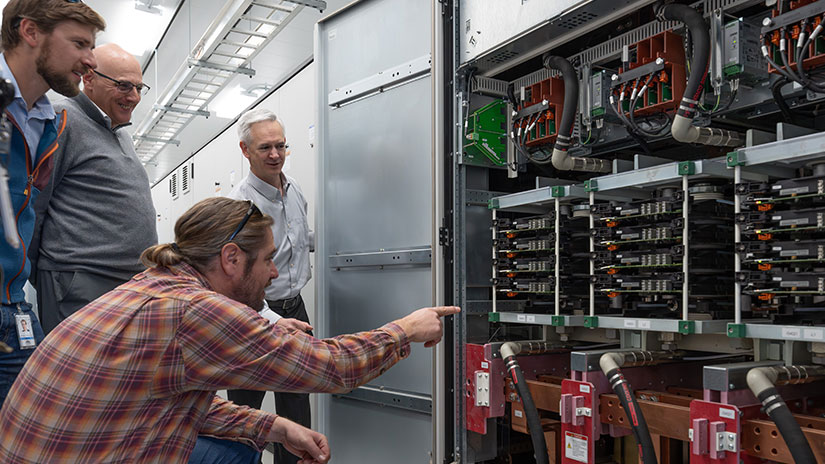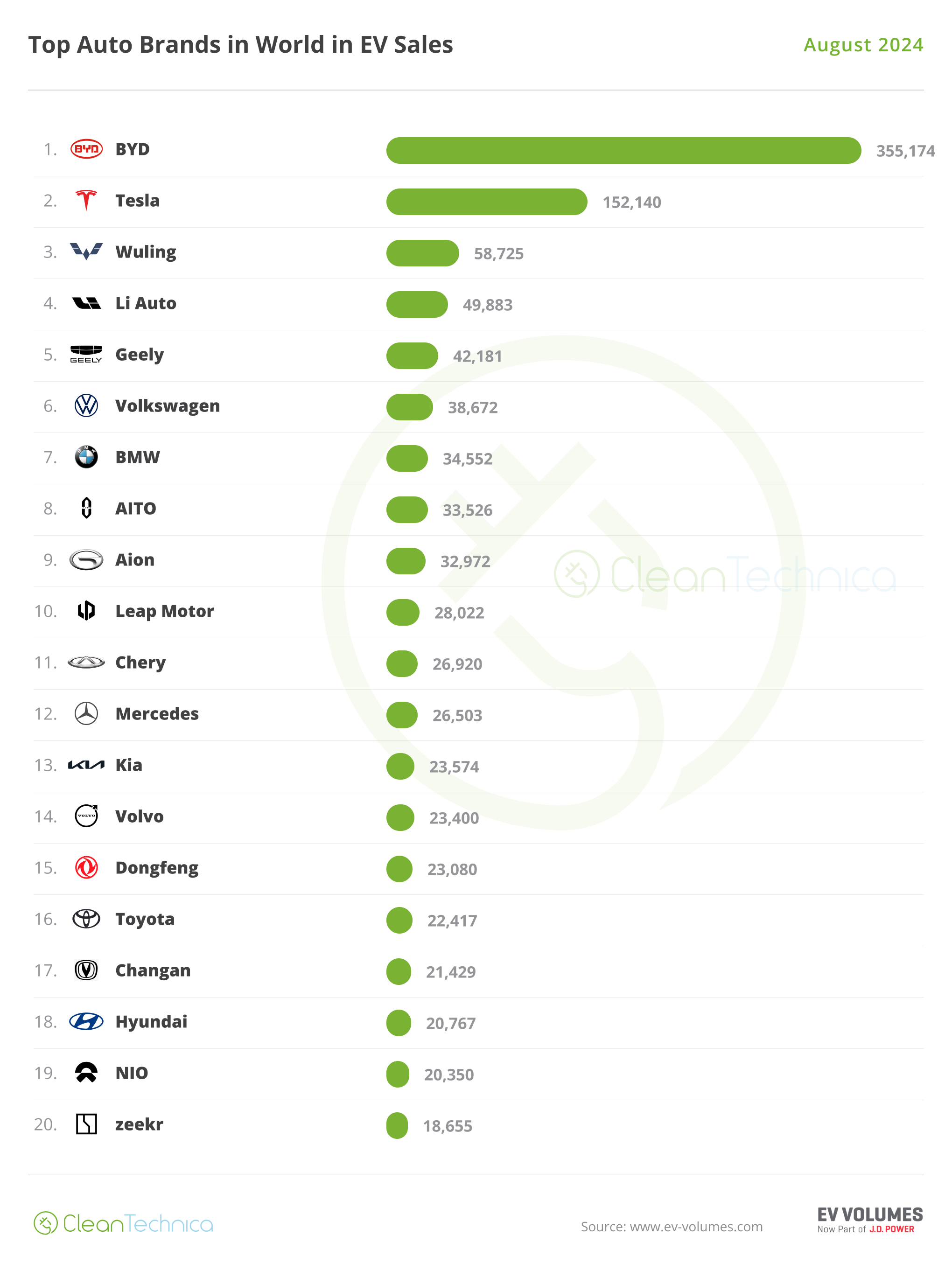Sign up for daily news updates from CleanTechnica on email. Or follow us on Google News!
NREL Researchers Celebrate 10 Years of Replicating Grid Events To Strengthen Renewable Energy Technologies
In September 2013, a team of National Renewable Energy Laboratory (NREL) researchers, led by Vahan Gevorgian and Robb Wallen, faced a looming deadline. Not only did the brand-new 5-megawatt (MW) dynamometer need to be up and running, connected to a 2.75-MW wind turbine nacelle as a trial technology component, but the power generated by the nacelle also had to be sent through the never-before-tried Controllable Grid Interface (CGI) and back to the grid.

As if that was not enough pressure, a record flood hit the Boulder, Colorado, area near what is now known as NREL’s Flatirons Campus, where the team’s work was being conducted.
“It was epic. The deadline was the last day of our fiscal year of 2013, and it coincided with a 100-year flood,” Gevorgian said. “We worked hard, spending many nights on campus because some of us couldn’t even go home because of the flooding. We survived on pizzas.”
Complicating things further was the fact that Przemyslaw Koralewicz, who, in 2013, was working alongside the NREL team as a systems engineer for ABB—an NREL partner that built the CGI’s power converter—was stuck in a hotel in Louisville, Colorado, which itself was flooded. As a result, he participated in the race to deadline remotely by video chat on Vahan’s computer tablet.
“It was a crazy time,” recalled Wallen, who had not been convinced the CGI was going to work. “But we had the whole loop completed at 9 p.m. on the last day, made all the milestones, and the CGI worked great!”
NREL’s 7-MW CGI has been working continuously in the decade since it became operational. Wallen estimates that some 50 projects have used the CGI. Isolated from the utility grid, the customized, controllable research grid helps manufacturers and system operators understand how renewable energy systems, which can include wind turbines and solar panels as well as energy storage inverters, react to grid disturbances such as power surges or outages before they are deployed.
“The first main benefit of the CGI is that it can cover every possible scenario that anything—a small distribution circuit, a microgrid, an island energy system, or a bulk grid—might experience under any grid condition,” Gevorgian said.
According to Gevorgian, the CGI has played a big role in making the grid more reliable. Researchers who came to NREL when the CGI was already in operation brought new ideas for added capabilities. Researcher Shahil Shah, who joined NREL in 2018, helped develop new methods for using the CGI to evaluate grid stability impacts by inverter-based resources like solar arrays and wind turbines.
“The second main benefit is that the CGI couples controlled grid conditions with real resource variability in an end-to-end system,” Gevorgian continued. “When we test an article, we test the whole thing. It’s a full wind turbine connected to cables and transformers to the controlled grid with all the sensors.”
And those connections are all being made in real time at the Flatirons Campus. “Everything is real. Very little, if anything, is simulated,” Gevorgian said.
That saves time and resources while minimizing integration issues, improving reliability, and advancing the development and deployment of renewable energy technologies.
“Using the CGI, our partners can find issues within a very realistic environment and then leave NREL with a much better, much more compliant and reliable product,” Wallen said. “We’re really benefiting renewables by making sure things do what they’re supposed to do.”
Years in the Making
The team behind the CGI included Gevorgian, Wallen, Koralewicz, and many others.
“I call Vahan the father of the CGI,” said Koralewicz, who joined NREL as a researcher in 2016 to manage CGI experiments and has since been developing more sophisticated CGI functionalities. “He had the idea and got the funding. Robb implemented the CGI. And I commissioned it from the ABB side.”
Gevorgian spreads the credit more generously.
“That baby has many fathers,” he said. “The CGI wouldn’t have happened without a number of other folks, some who are no longer with NREL. Everyone—from NREL management to the U.S. Department of Energy—was fully supportive.”
Conceived in 2010–2011, the CGI idea was floated during a workshop with large wind energy vendors to determine what they wanted to see in such a research apparatus and what would provide the most benefit to the U.S. wind energy industry.
“That helped us specify the characteristics of the device, but during that work, we also realized, ‘Why limit ourselves to wind? What we’re building could benefit any aspect of renewable generation or distributed generation at multimegawatt scale,’” Gevorgian said. “So, the team expanded the scope, and that was the birth of the CGI.”
After receiving funding from the American Recovery and Reinvestment Act and other sources, NREL engaged with ABB, who built the CGI based on NREL’s specifications.
“Przemyslaw, who was at ABB, wrote this ‘other brain’ on top of an industrial drive that had been used for large ship propulsion and mining applications,” Wallen said. “It was a really good move because we were able to leverage all of the safety and protections of this drive system. Turning it into the CGI’s power supply was pretty novel.”
Wallen said that when the potential for other applications—such as bringing in a battery storage system to connect the CGI to the entire Flatirons Campus—became clear, that formed the basis for NREL’s Advanced Research on Integrated Energy Systems (ARIES) research platform.
“We can run a model of an island power grid on a real-time digital simulator, have that interact with the CGI, and then have the grid simulator interact with real-life assets on our site,” Wallen said. “So, the CGI allowed NREL to expand our capabilities and attract a lot of industry partners and a lot of research.”
Partners Line Up
In addition to research funded by U.S. Department of Energy offices—such as those specializing in wind energy, water power, solar energy, hydrogen and fuel cell technologies, and grid modernization—the CGI helped many industry partners validate their renewable energy technologies. Among these were General Electric, SMA Energy Systems, AES Corporation, and Caterpillar Inc.
For global energy company AES, the CGI’s capabilities have helped reduce the risk of implementing new technologies on two of its projects on the Hawaiian island of Kauai: the Lāwai Solar and Energy Storage project and U.S. Navy’s Pacific Missile Range Facility microgrid.
“If we didn’t have the CGI, we wouldn’t be able to learn as quickly. The CGI allows us to run through many possible grid events and make sure that we understand how our plants behave in a way that will support the grid and meet our customers’ needs,” said Kelsey Horowitz, an AES senior manager in innovation engineering. “There’s just no way that we would be able to do hardware testing of all these different grid conditions without using the CGI.”
One Grid Interface Deserves Another
The CGI’s popularity among NREL, the U.S. Department of Energy, and industry partners has created a research bottleneck. That is one of the reasons why NREL decided to build a second CGI—CGI2, a 20-MW unit that will complement the first CGI and enable NREL to support more experiments.
Keeping up with the pace of renewable energy technology is another reason.
“In 2013, the CGI provided basic functionality. It was a prototype. Since then, we’ve upgraded the CGI many times with extra features,” Koralewicz said. “CGI2 is the result of this evolution. It includes a lot of lessons learned and has additional functionalities that we developed over the past 10 years.”

CGI2, which has been in development since 2018, is nearly ready for its research debut.
“Right now, NREL is bringing stakeholders together and giving them a chance to kick the tires,” Wallen said. “Then, we’ll address any concerns and declare CGI2 research ready.”
Stay tuned for news about the CGI2, and learn more about the CGI and NREL’s wind energy research facilities. And be sure to subscribe to NREL’s wind energy newsletter for more news like this.
Originally published on NREL’s website.
Have a tip for CleanTechnica? Want to advertise? Want to suggest a guest for our CleanTech Talk podcast? Contact us here.
Our Latest EVObsession Video
I don’t like paywalls. You don’t like paywalls. Who likes paywalls? Here at CleanTechnica, we implemented a limited paywall for a while, but it always felt wrong — and it was always tough to decide what we should put behind there. In theory, your most exclusive and best content goes behind a paywall. But then fewer people read it!! So, we’ve decided to completely nix paywalls here at CleanTechnica. But…
Thank you!
CleanTechnica uses affiliate links. See our policy here.




